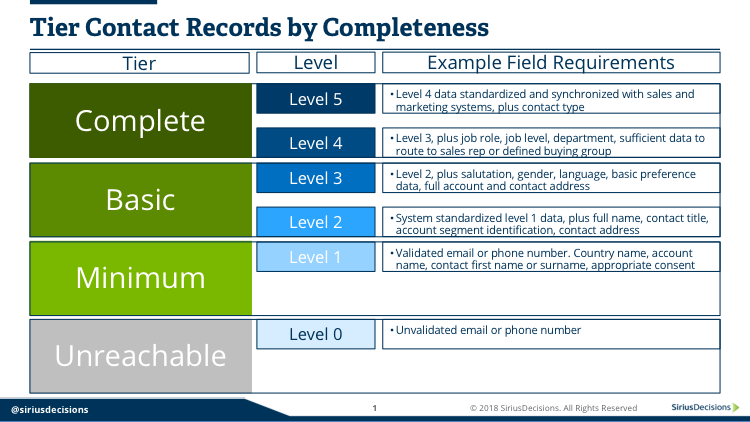Completeness of Contact Data Records: A Two-Layered Approach
- Data acquisition efforts must not operate under the assumption that more names are better; instead, properly assess demand generation requirements
- Organizations need to assess the viability of existing contact records and their ability to support marketing campaigns
- SiriusDecisions recommends a two-layered approach to evaluating contact completeness
Let me tell you a secret. When I was a young lad, I used to collect postage stamps. The hobby of philately may be seen as an old person’s pastime, but there is something cool about accurately sorting, cataloguing and displaying miniature “works of art” that record a great deal about any nation’s history. Well, that’s my opinion! I could tell you where I obtained each stamp and its value – yes, I was a real nerd! The challenge for the philatelist is the desire to collect the entire set of stamps within a particular issue. The desire is to have the stamp for its own sake.
Having worked with data in B2B industries for many years, I need to resist the urge to collect contact data in a similar way – simply for its own sake. Data acquisition efforts must not assume that more names are always better but must instead properly assess demand generation requirements. In addition, the recent introduction and enforcement of stricter privacy laws around the globe have, for many companies, acted as an external force, requiring a review and implementation of more stringent cross-functional contact acquisition and retention processes. Adopting consistent procedures that align with demand generation requirements and span the marketing, tele, sales and channel functions has resulted in many organizations achieving improved acquisition rates.
 Naturally, any comprehensive contact acquisition and retention plan requires organizations to assess the current viability of existing contact records and their ability to support marketing campaigns. This begs the question: How should companies evaluate and rate an existing record?
Naturally, any comprehensive contact acquisition and retention plan requires organizations to assess the current viability of existing contact records and their ability to support marketing campaigns. This begs the question: How should companies evaluate and rate an existing record?
We recommend a two-layered approach that includes varying levels of detail. An initial four-tier structure defines tiers of record completeness according to an evaluation of the record’s ability support the execution of core sales and marketing functions. These are:
- Complete. This includes all core profile data to match individuals to personas. It allows for multiple contact methods and delivery of highly segmented content.
- Basic. This includes sufficient data to support targeted outbound communications. This level or higher is required for contacts to be counted in segmented Demand Waterfall usage.
- Minimum. Sufficient data exists to send outbound communication to an individual. The record is not aligned to a segmented approach.
- Unreachable. Data does not support proactive outreach. Email is lacking or repeatedly bounces. The phone number is not accurate. Note to self: Delete this data and save the company money.
This tiered approach to summarizing the condition of the database is preferable to reporting to the broader stakeholder community about data completeness on a field-by-field basis. This level of detail is adequate for campaign data readiness planning discussions.
However, data stewards and key operational teams need to have more robust and clearer definitions of what constitutes each tier so that data records can be classified accurately and uniformly across the organization. To this end, the chart shows six sub-levels of contact completeness and example fields that would typically determine a particular tiering. The more granular view allows for an objective evaluation of the state of the contact database. To arrive at this level of categorization, work with data users to understand the importance of these fields to drive campaigns.
No one should collect contact data in the same way a philatelist collects stamps. Articulating a contact record’s completeness helps describe the degree to which each has the necessary attributes to fulfill marketing activities to the appropriate segments and personas. Understanding the readiness of each contact record in relation to persona, business segment and field validity is crucial.
